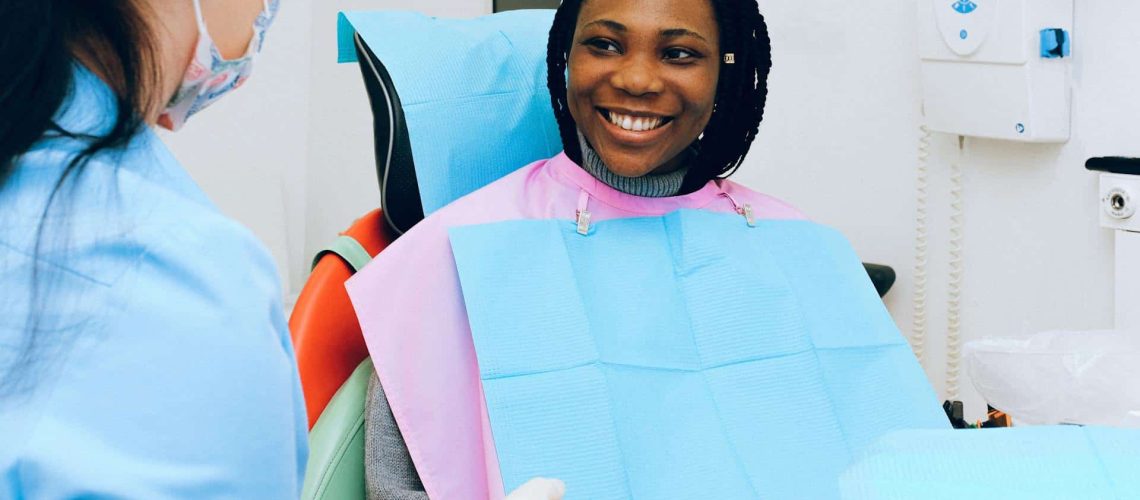Let’s explore which is better, invisible aligners vs braces.
Orthodontic treatment has come a long way in recent years, offering patients more choices than ever to achieve a straighter, healthier smile. Two popular options in the world of orthodontics are Invisible Aligners and Traditional Braces. Each approach comes with its unique features and advantages, making the decision of which one to choose a crucial aspect of your orthodontic journey. In this comprehensive guide, we will delve into how these treatments work, their respective benefits, available options, and which may be better suited for different age groups.
How It Works: Invisible Aligners Vs. Braces
To better understand the mechanics behind these orthodontic treatments, let’s see how Invisalign and Traditional Braces work.
Invisalign Aligners: A Closer Look
Invisalign is a revolutionary orthodontic treatment that has gained immense popularity for its discreet and convenient approach. The process begins with a detailed assessment by an orthodontist who uses advanced 3D imaging technology to create a precise digital model of your teeth. This digital model serves as the blueprint for your entire treatment.
Customization
Using the digital model, a series of custom-made, clear plastic aligners, often referred to as trays, are fabricated specifically for your unique dental needs. These aligners are designed to fit snugly over your teeth and are virtually invisible when worn.
Gradual Progression
You receive a sequence of aligners, each slightly different from the previous one. You typically wear each set for about two weeks before advancing to the next. As you progress through the series, the aligners exert gentle pressure on your teeth, guiding them into their desired positions.
Regular Check-Ups
During your treatment, you’ll have periodic check-ups with your orthodontist to monitor your progress and receive new sets of aligners. These appointments allow for adjustments and ensure that your teeth are moving according to plan.
Removability
One of Invisalign’s most significant advantages is its removability. You can take out the aligners when eating, drinking, brushing, and flossing. This not only makes oral hygiene easier but also allows you to enjoy your favorite foods without restrictions.
Traditional Braces: The Classic Approach
Traditional braces have been a staple in orthodontics for many decades. This tried-and-true method involves the use of metal brackets, wires, and sometimes bands to correct dental misalignments.
Bracket Placement
Metal brackets are attached to the surface of each tooth with a special adhesive. A wire is then threaded through these brackets.
Constant Pressure
The wire, often made of high-quality stainless steel, is tightened at regular intervals. This exerts continuous pressure on the teeth, guiding them into their new positions over time.
Periodic Adjustments
You’ll need to visit your orthodontist periodically to have the braces adjusted. During these appointments, the wires are tightened or changed, ensuring that your teeth continue to move as planned.
Diverse Options
While traditional metal braces are the most recognizable, there are variations available, including ceramic braces with tooth-colored brackets for a less conspicuous appearance.
Advantages And Benefits Of Invisible Aligners and Braces
When it comes to orthodontic treatment, both Invisalign and traditional braces have their unique advantages and benefits. Each approach offers distinct features that cater to varying needs, preferences, and lifestyles. Understanding the advantages of both options can help you make an informed decision about which orthodontic treatment is the best fit for you or your loved one. Let’s explore the advantages and benefits of Invisalign and braces in-depth.
Advantages Of Invisalign:
- Invisibility: Perhaps the most compelling advantage of Invisalign aligners is their near-invisibility. The clear, plastic trays are discreet, making them an excellent choice for those who wish to undergo orthodontic treatment without drawing too much attention to their teeth.
- Removability: Invisalign aligners are removable, allowing you to take them out when eating, drinking, brushing, and flossing. This not only simplifies oral hygiene but also grants the flexibility to enjoy your favorite foods without restrictions.
- Comfort: Invisalign aligners have smooth edges and lack the metal brackets and wires found in traditional braces. This often translates to a more comfortable orthodontic experience with fewer incidents of irritation or soreness.
- Predictable Treatment: Advanced 3D imaging technology and computer modeling allow for precise treatment planning with Invisalign. This means you’ll have a clear understanding of the expected treatment duration and outcome from the start.
- Fewer Appointments: While periodic check-ups are necessary, Invisalign typically requires fewer in-office visits than traditional braces. This can be particularly convenient for individuals with busy schedules.
Benefits Of Traditional Braces:
- Effectiveness for Complex Cases: Traditional braces are highly effective in addressing severe misalignments and complex orthodontic issues. The metal brackets and wires provide the orthodontist with greater control over tooth movement.
- Durability: Metal braces are robust and durable, making them suitable for patients of all ages, especially children and teenagers who may be more active.
- Customization: While metal braces are the most recognizable, there are variations available, including ceramic braces with tooth-colored brackets for a less conspicuous appearance. This customization can cater to both aesthetic and functional preferences.
- No Compliance Required: Unlike Invisalign, where compliance is crucial, traditional braces are affixed to your teeth, eliminating the risk of forgetting to wear them or losing aligners.
- Predictable Results: Traditional braces have a long history of successful orthodontic treatment. They provide a reliable method to achieve desired results, particularly in complex cases.
Different Types of Invisible Aligners and Orthodontic Braces
Orthodontic treatment has seen remarkable advancements over the years, providing patients with an array of options to achieve a perfectly aligned smile. Two primary categories of orthodontic solutions, Invisible Aligners and Braces, offer various types tailored to specific needs and preferences. In this exploration, we will delve into the different types of Invisible Aligners and Braces, shedding light on the diversity within each category.
Types Of Invisible Aligners
- Invisalign Aligners: Invisalign is perhaps the most well-known brand in the world of invisible aligners. They offer several specialized options to cater to different orthodontic needs:
- Invisalign Full: Designed for comprehensive orthodontic treatment, addressing a wide range of issues, from mild to complex.
- Invisalign Lite: Suitable for less complex cases, Invisalign Lite provides a more streamlined treatment approach.
- Invisalign Teen: Tailored to the unique needs of teenagers, it includes features like compliance indicators to ensure proper wear.
- ClearCorrect: ClearCorrect aligners operate on a similar principle as Invisalign, using clear, removable trays. They offer a discreet and comfortable alternative for orthodontic correction.
- SmileDirectClub: This teledentistry-based aligner system provides an at-home option for mild to moderate cases. Patients receive a series of clear aligners after an initial assessment by a remote dentist or orthodontist.
- Byte: Byte’s HyperByte® technology sets it apart by using high-frequency vibrations to accelerate tooth movement. This can result in shorter treatment times compared to traditional aligners.
Types of Braces
- Traditional Metal Braces: These are the classic braces we often picture when thinking about orthodontic treatment. They consist of small metal brackets affixed to the teeth, connected by wires that apply consistent pressure for tooth alignment. Modern versions of metal braces are smaller and more comfortable than ever.
- Ceramic Braces: Ceramic braces are similar to traditional braces but feature tooth-colored or clear brackets that blend in with the natural tooth color. This makes them less noticeable while retaining the effectiveness of metal braces.
- Lingual Braces: Lingual braces are placed on the inside surface of the teeth, making them virtually invisible from the outside. They are ideal for individuals who desire discretion without using removable aligners.
- Self-Ligating Braces: These braces are use special brackets that eliminate the need for elastic bands or ligatures. They offer a more streamlined and efficient treatment process.
- Clear Braces: Clear braces combine the effectiveness of traditional braces with a more discreet appearance. The brackets are made from clear materials, reducing their visibility.
- Orthodontic Aligners with Attachments: In some cases, traditional braces may be used in conjunction with clear aligners to achieve the desired results. Attachments are added to the teeth to help the aligners grip and move the teeth effectively.
Clear Aligners Vs. Metal Braces: How Much Does It Cost?
Achieving a straight and beautiful smile through orthodontic treatment is a valuable investment in your oral health and self-confidence. However, one crucial consideration for many individuals is the cost associated with these treatments. Let’s delve into the factors that influence the cost of Invisible Aligners and Braces and explore the differences in pricing between these two orthodontic options.
Factors Affecting Braces Treatment Cost
1. Type of Braces
- Metal Braces: Traditional metal braces are often the most cost-effective option. They are renowned for their durability and effectiveness in addressing various orthodontic issues.
- Ceramic Braces: Ceramic braces, with their tooth-colored or clear brackets, offer a more discreet appearance but may come at a slightly higher cost than metal braces.
2. Treatment Complexity
- The extent of orthodontic correction required plays a significant role in determining the cost. More complex cases involving severely misaligned teeth or bite issues may require a more extended treatment duration, which can impact the overall cost.
3. Geographic Location
- The cost of braces can vary depending on your location and the availability of orthodontic providers in your area. Urban areas tend to have higher prices than rural regions.
4. Orthodontist’s Experience
- An experienced orthodontist may charge higher fees for their expertise and track record of successful treatments.
Factors Affecting Invisalign Cost
1. Invisalign Treatment Type
- The specific type of Invisalign treatment, such as Invisalign Full, Invisalign Lite, or Invisalign Teen, can impact the cost. Comprehensive treatments tend to be more expensive.
2. Treatment Duration
- Similar to traditional braces, the duration of Invisalign treatment influences the overall cost. Longer treatments may incur higher fees.
3. Geographic Location
- As with braces, the cost of Invisalign can vary depending on where you live and the availability of orthodontists in your area.
4. Orthodontist’s Experience:
- Experienced orthodontists may charge higher fees for Invisalign treatment, reflecting their expertise in customizing and overseeing the treatment process.
Invisalign vs. Braces Cost Comparison
- In general, the cost of Invisalign treatment tends to be slightly higher than traditional metal braces due to its advanced technology, discreet appearance, and removability.
- Ceramic braces, which offer a more aesthetic alternative to traditional metal braces, often fall within a similar price range to Invisalign.
- Clear aligners, such as Invisalign, are a preferred choice for those seeking a virtually invisible orthodontic solution. They are ideal for mild to moderate cases of crooked teeth or minor bite issues. While they may be more expensive than metal braces, many patients find the convenience and aesthetics of clear aligners to be well worth the investment.
- Metal braces remain a reliable and cost-effective option for addressing a wide range of orthodontic problems, making them suitable for those with more complex cases.
Are Braces Better Than Invisible Aligners?
Ultimately, the choice between braces and invisible aligners often comes down to personal preference. Some individuals may prioritize the discreet appearance and comfort of invisible aligners, while others may value the comprehensive correction capabilities and cost-effectiveness of braces.
In conclusion, whether braces are better than invisible aligners or vice versa depends on your unique orthodontic needs, lifestyle, and priorities. Consulting with an experienced orthodontist is crucial, as they can assess your case and provide personalized recommendations. The most important factor is choosing the option that aligns with your goals for a healthier, straighter smile that you can confidently share with the world.




